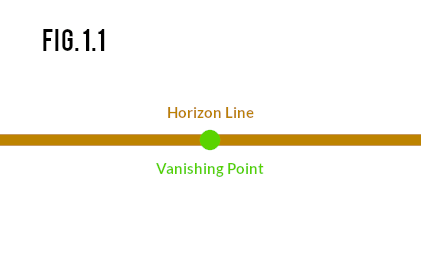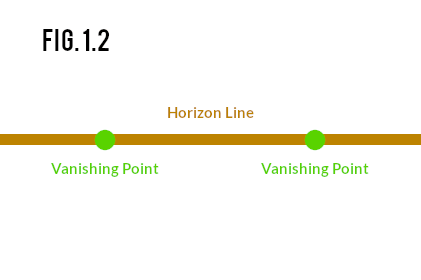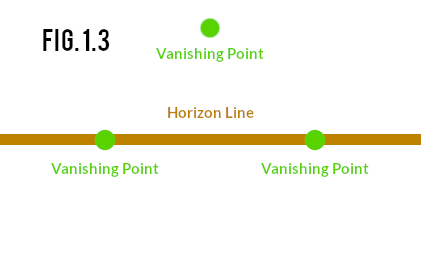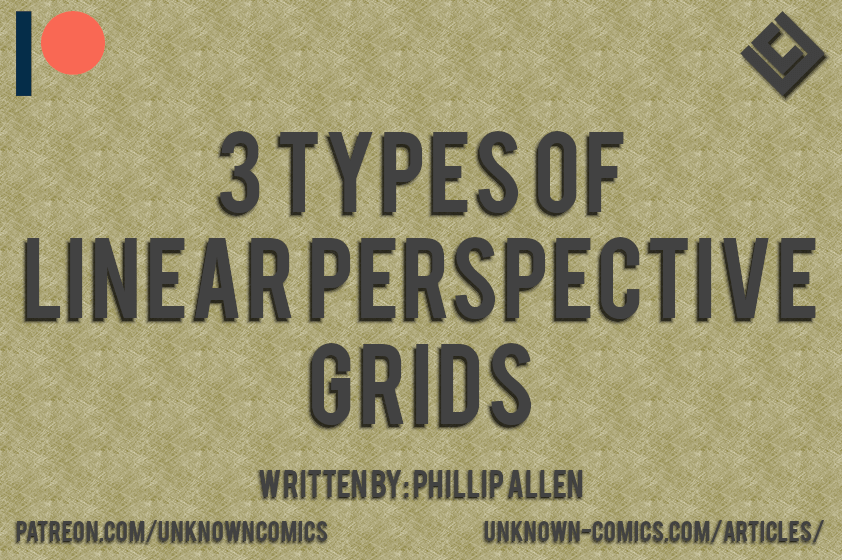I have to admit, I’ve been bitten by the art bug since I’ve been researching a lot of illustrative practices lately. This article will focus on explaining what perspective grids and then outline the 3 types of linear perspective and how you can use them to improve your comic illustrations!
So just to be clear, this article will focus on defining perspective grids, outline the few linear perspective grids, explain what they are used for, and hopefully introduce you to a pretty good YouTube channel that helped explain the entire concept to me!
I also went to to the trouble of figuring out whether or not GIMP can support the management of perspective grids and I’ll talk about that in this article as well. I even have a little treat for those of you who visit my Patreon page after this!
Before I begin though, I’d like to bring your attention to a particular YouTube channel that helped me better understand this subject along with a few others!
BaM Animation (Thanks For The Great Video!)
BaM Animation is a YouTube channel developed by Brent Noll and Maximus Pauson. Their content is directed towards the animation industry, but their content can be quite helpful to comic creators trying to better understand simple and complex illustrative concepts.
Take this video for example. I learned almost everything that I know about perspective grids and how to use them from this video alone and it’s quite good!
Be sure to check out their channel after reading this article (and getting your downloadable goodie from my Patreon page!). I’m sure you’ll like what you find!
And yes, I could have used their video and simply cited them as reference material for this article. But I wanted to give special credit where its due!
What Is A Perspective Grid?
Perspective grids are based on Horizon Lines and Vanishing Points (see fig 1.1, 1.2 and 1.3).
Perspective grids allow an illustrator to draw believable 3-dimensional objects on a 2-dimensional surface (i.e. paper or a screen).



Types of Perspective Grids!
There are a few types of perspective grids. These fall under two categories. These are:
- Linear Perspective
- Warped Perspective
For both linear and warped perspective, there are a variety of options available. But as mentioned before, this article will be focusing on Linear perspective.
Types of Linear Perspective Grids!
There are three types of linear perspective. These are 1 point, 2 point, and 3 point perspective!
1 Point Perspective (1PP) Grids
1 point perspective is made up of a single vanishing point on a horizon line. This vanishing point can be moved around as necessary anywhere on the horizon line.
A rectangular figure facing the reader will be made of horizontal and vertical lines. The key feature of 1 point perspective is that all the edges receding must follow the grid towards the vanishing point.

When Should You Use 1PP?
1 point perspective is good for illustrating objects that face the viewer. This can be anything like a simple city street or a room.
What To Look Out For With 1PP?
You’ll want to be careful with the placement of the horizon line (something you’ll hear a lot on BaM Animation’s video…)
If the horizon line is too high it can give the reader the perspective that they’re viewing the scene from an angle of a security camera.
This offers the reader too much information about what is going on in the ground. It disconnects the reader for the space that they’re in. This is probably because we don’t often care about what is going on the floor when a character or an object are interacting with something else in a scene.
If you lower the horizon line you can then focus more on adding more background elements. It allows you to make your shapes more dynamic.
2 Point Perspective (2PP) Grids
2 point perspective is constructed with a horizon line and two vanishing points. Both vanishing points must lie on the horizon line.
The placement of the two vanishing points, specifically how close together they are to each other, can change the image that you’re trying to illustrate. More importantly, it can drastically change the type of point of view that you’re trying to convey to the reader.

When Should You Use 2PP?
Well, deciding on when to use a 2 point perspective grid really depends on what type of point of view you’re trying to give your reader. With 2 point perspective grids, you can end up giving your reader a wide angle lens effect or an isometric effect.
It’s important to note, that using the 2 point perspective to obtain either of these effects doesn’t make your illustration (and the perspective that you’re drawing in) wrong. It’s just important to understand the type of point of view you’d like your reader to have.
Wide Angle Lens Effect
If you were to place the two vanishing points close together you’d result in a heavily distorted illustration that gives the impression that you’re looking through a wide angle lens.
I’m sure you can find an appropriate time and place to use a two-point perspective grid like this, but I can’t imagine having a good reason to use this throughout the bulk of your work.
Isometric Effect
If you were to place the two vanishing points far from each other it’ll create an isometric effect.
From my experience, this is how we most often see a 2 point perspective grid used in comics.
3 Point Perspective (3PP) Grids
A 3 point perspective grid is made up of a horizon line, two vanishing points lying somewhere on that line, and a third vanishing point somewhere above or below the horizon line.
This type of perspective grid will typically have the most extreme angles. It’ll provide you with the most dynamic drawings. And the end result won’t have any vertical or horizontal lines!
Again, the placement of all three vanishing points can significantly affect the point of view of your illustration. Since we can get a good idea of what happens when we place the vanishing points on the horizon line close or far apart from each other; it’s important to discuss what happens when we move the third vanishing point.
But first, let’s talk about when you should use 3 point perspective grids!

When Should You Use 3PP?
If you’re looking to create an illustration that has more depth than the other two can provide, then using a 3 point perspective is the way to go. It’s great for illustrating cities but most importantly, it gives you a chance to illustrate a different point of view!
Looking Down
If the 3rd vanishing point lies above the horizon line, then the point of you that you’re presenting is of someone looking down.
Looking Up
If the 3rd vanishing point lies below the horizon line, then the point of view is of someone looking up to the scene you’ve constructed!
And this is pretty cool!
Conclusion
And there you have it! You now know about how you can start drawing with all 3 types of linear perspective grids. With these tools, you should be able to more accurately depict 3-dimensional objects on a 2-dimensional surface with all the different types of perspective you’d like!
Or do you? Want to learn more? Good!
My next article will go on to cover the two types of warped perspective grids that I mentioned at the beginning of this article.
Download Perspective Grid Assets For GIMP
A little something of note. I understand that I promoted GIMP as being a free and powerful alternative to Adobe Photoshop in my two previous articles, Making Digital Comics on a Shoestring Budget and Setting Up GIMP To Digitally Illustrate Comics. But the truth is a little more complicated than that.
In my article Setting Up GIMP To Digitally Illustrate Comics, I mentioned that there are options for downloading applications called plug-ins or scripts that can make GIMP easier to use for your comic creating projects. Well, as of right now, there aren’t any for easily creating and managing perspective grids.
I’ve gone through the trouble of finding this out the hard way. I’ve tried all types of existing tools, searched the internet for any existing plug-ins or scripts, and even contacted GIMP directly to ask them if they had any such tools like the ones used on the video by BaM Animation (which uses Photoshop).
Now, there is a tool developed out there. But it was designed for an older version of GIMP. You can consider downloading it and the older version of GIMP but I’m sure you wouldn’t want to lose all the extra benefits the most up-to-date version of GIMP has to offer.
I have developed a short term alternative. On my Patreon post for this article, you’ll find a downloadable .zip file with a whole bunch of .png files. These files are of vanishing points that I have generated on GIMP. This was a tedious and annoying process. And it is not one that I’d like to subject you to.
Please feel free to download this file, plop it into your next comic creating project, move around, increase or decrease the size as necessary and use it to accurately draw in the perspective of your choice.
The downside comes in the increase in the image size. The lines will get thicker, which is not something you might be interested in.
I am currently looking on a long term solution for GIMP. These include:
- Encouraging GIMP’s development community to implement a tool that can help comic creator and digital artists as a whole to quickly and efficiently generate and customize their own perspective grids. And…
- I am looking to develop my own application (be it a script or a plug-in) that can perform the way that I think would benefit comic creators and digital artists.
For more information about how you can help make this little side project become a reality please review this article’s post over on my Patreon!
With all said! I look forward to the next article! I hope you enjoyed this article!
Bibliography
Animation, BaM, director. Perspective Drawing in Photoshop! Grids and Tips. Performance by Brent Noll, and Maximus Pauson, YouTube, BaM Animation, 3 Dec. 2018, www.youtube.com/watch?v=upxBGNcryRs.
Sign Up For
The Unknown Times!
Content Updates
Website News
Recommended Reading
And More to Come!
*Once every two weeks!*
Liked the article? Become part of my Patreon Community!
About The Author

Phillip Allen
Writer, Editor, and Founder of Unknown Comics
Hello there! My name is Phillip Allen and I'm the writer, editor, and founder of Unknown Comics. I am an aspiring comic book creator. In an attempt to learn how to create my own comic I came to learn just how few reliable resources existed out there. From a few books and unhelpful websites I decided to focus my attention on researching and writing a resource for both myself and the rest of the comic creating industry. This website and and its content is the result of all of that hard work.

